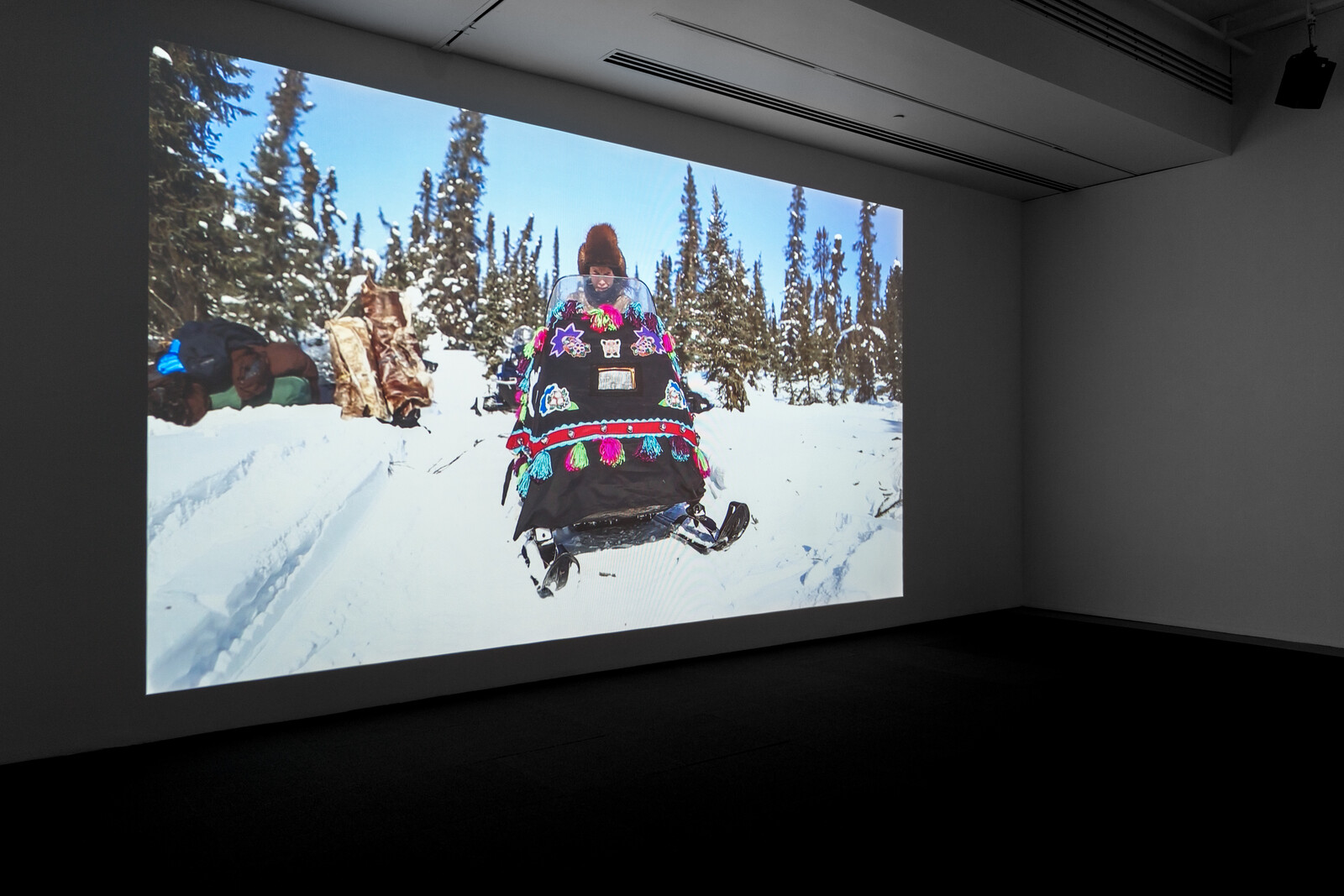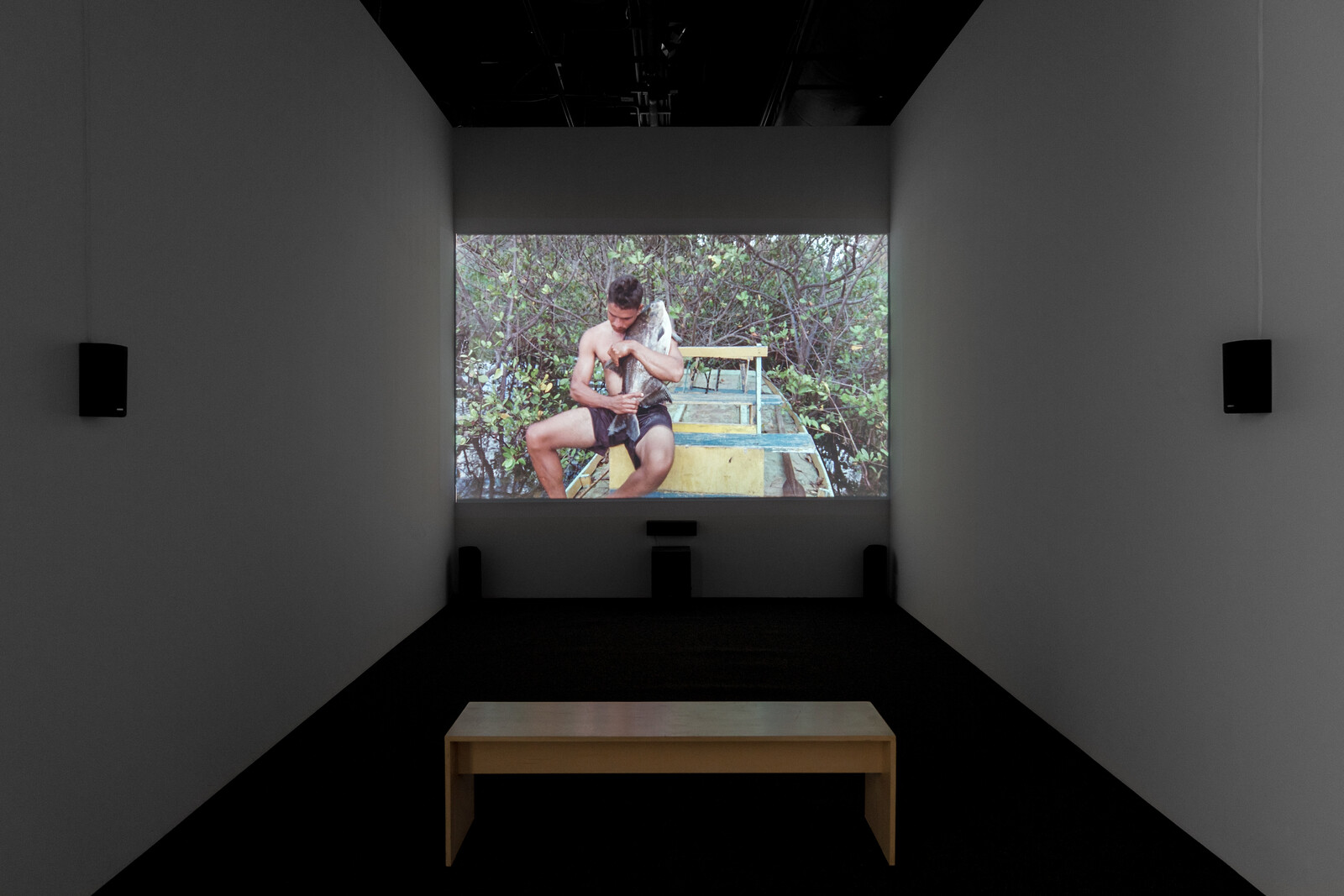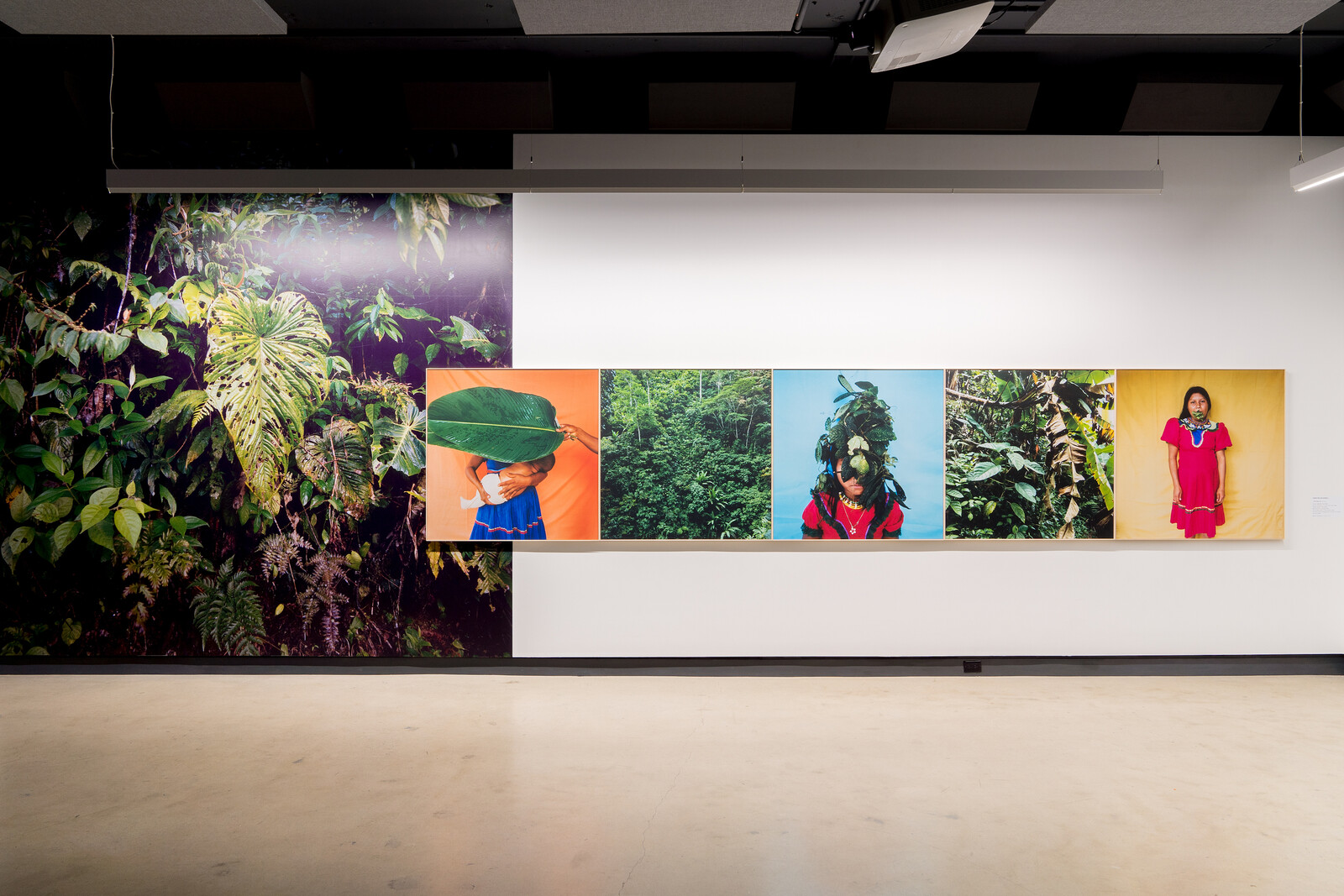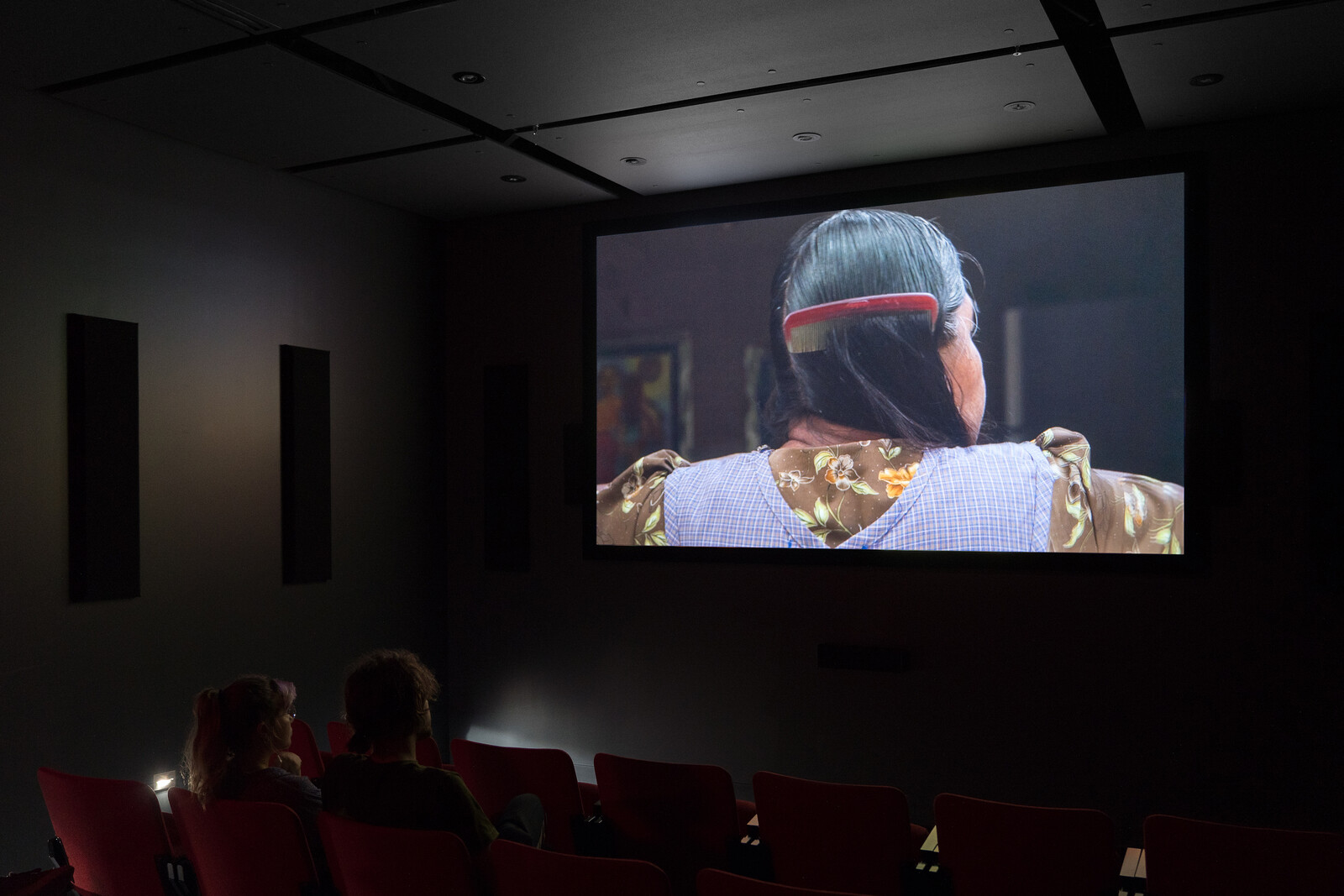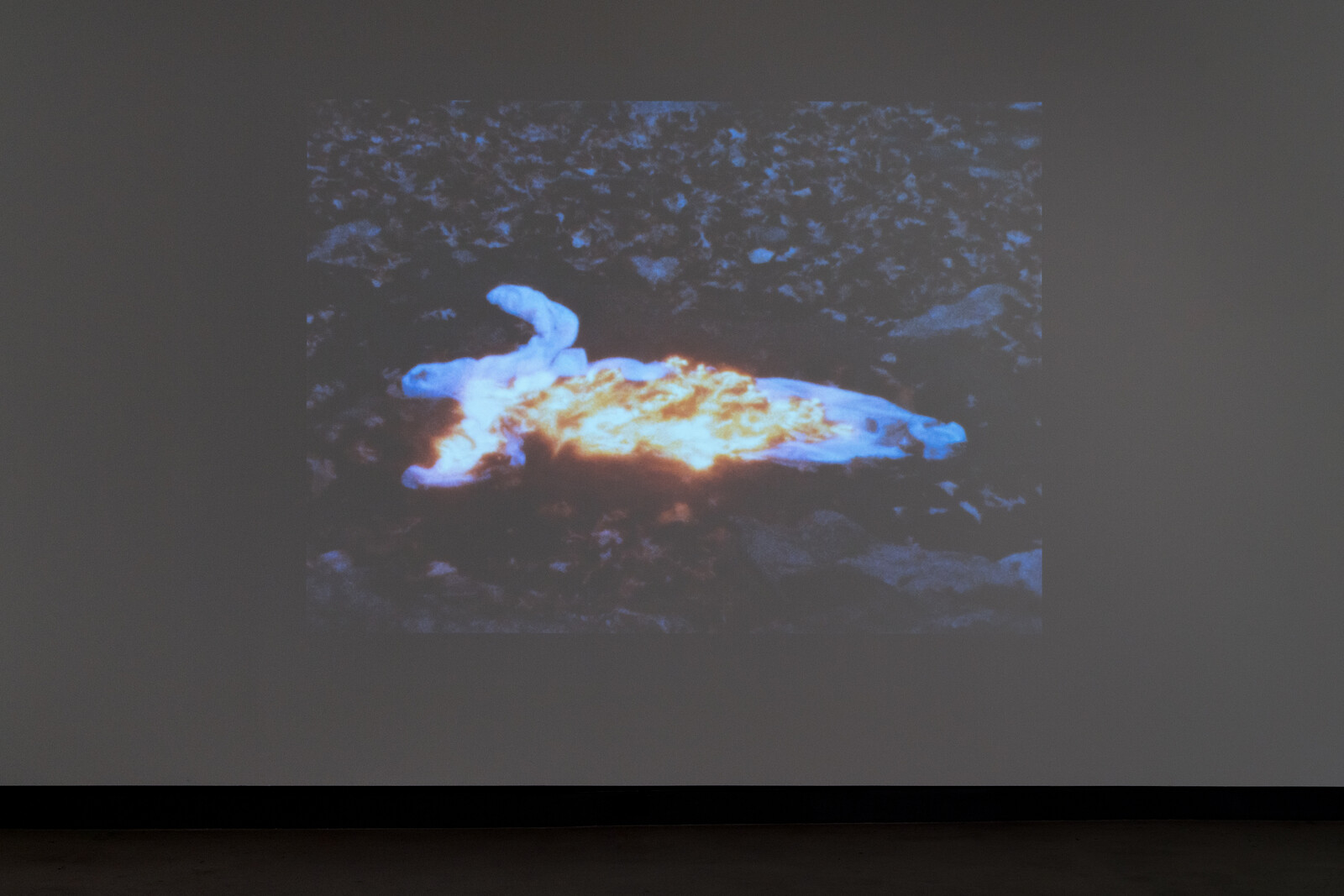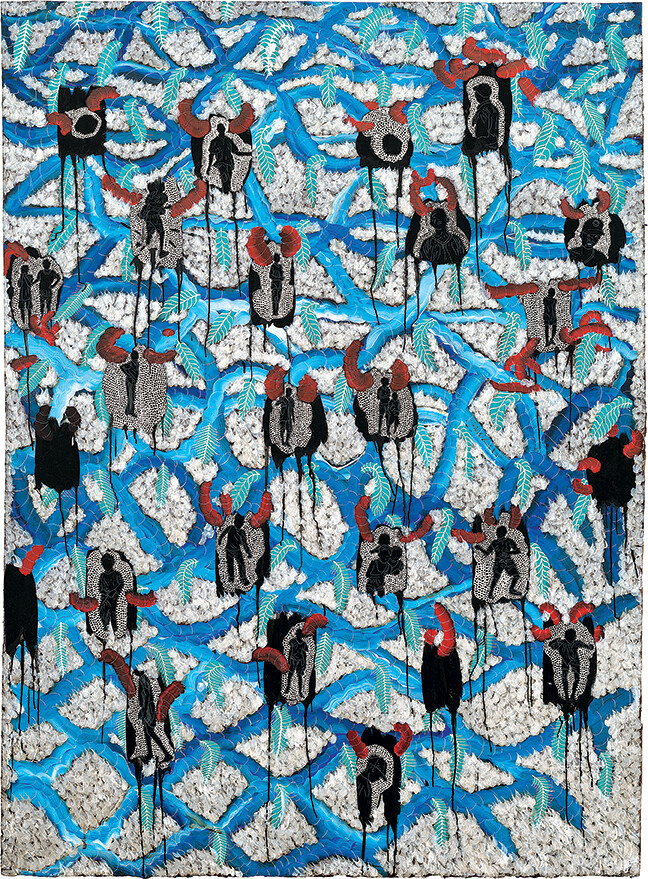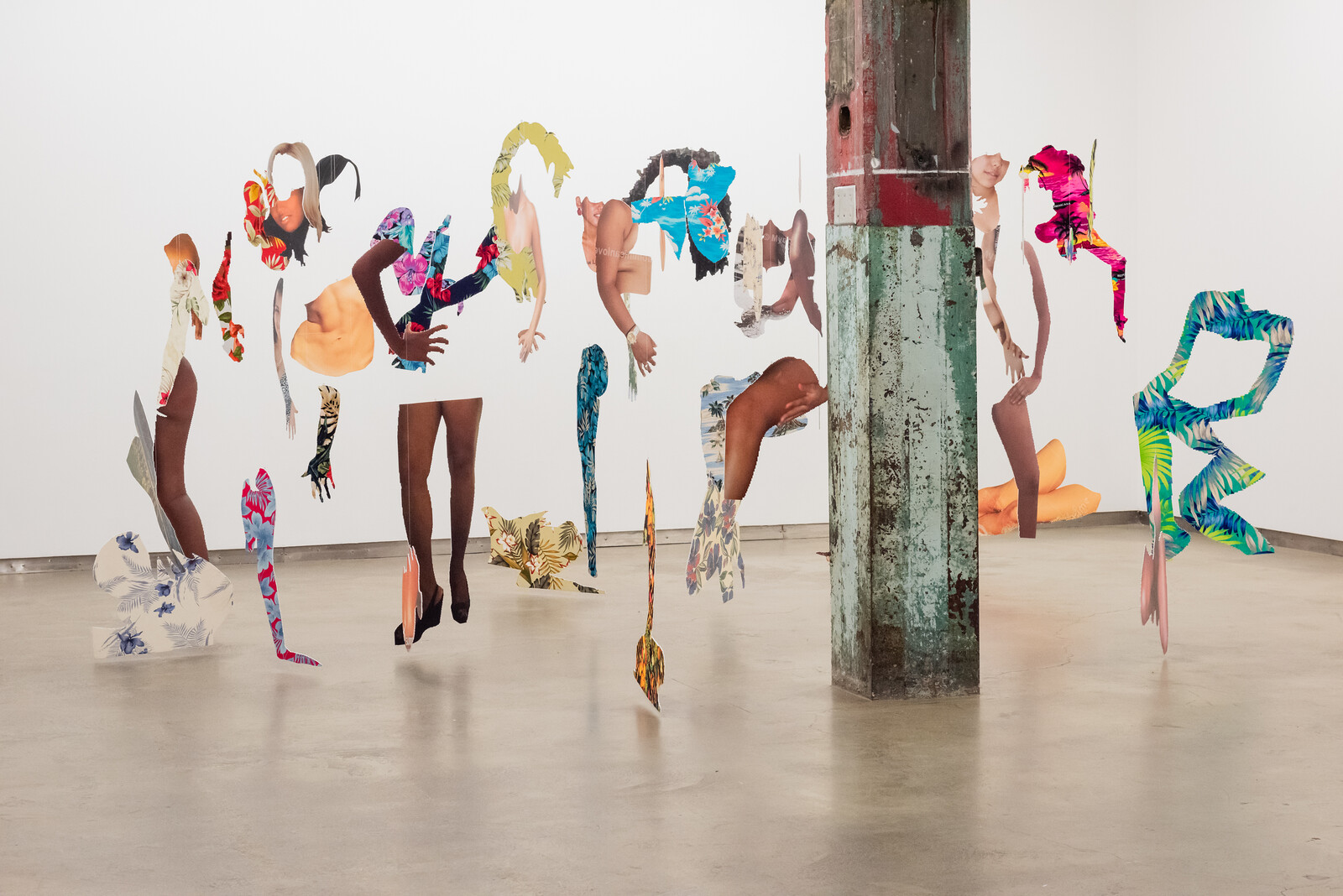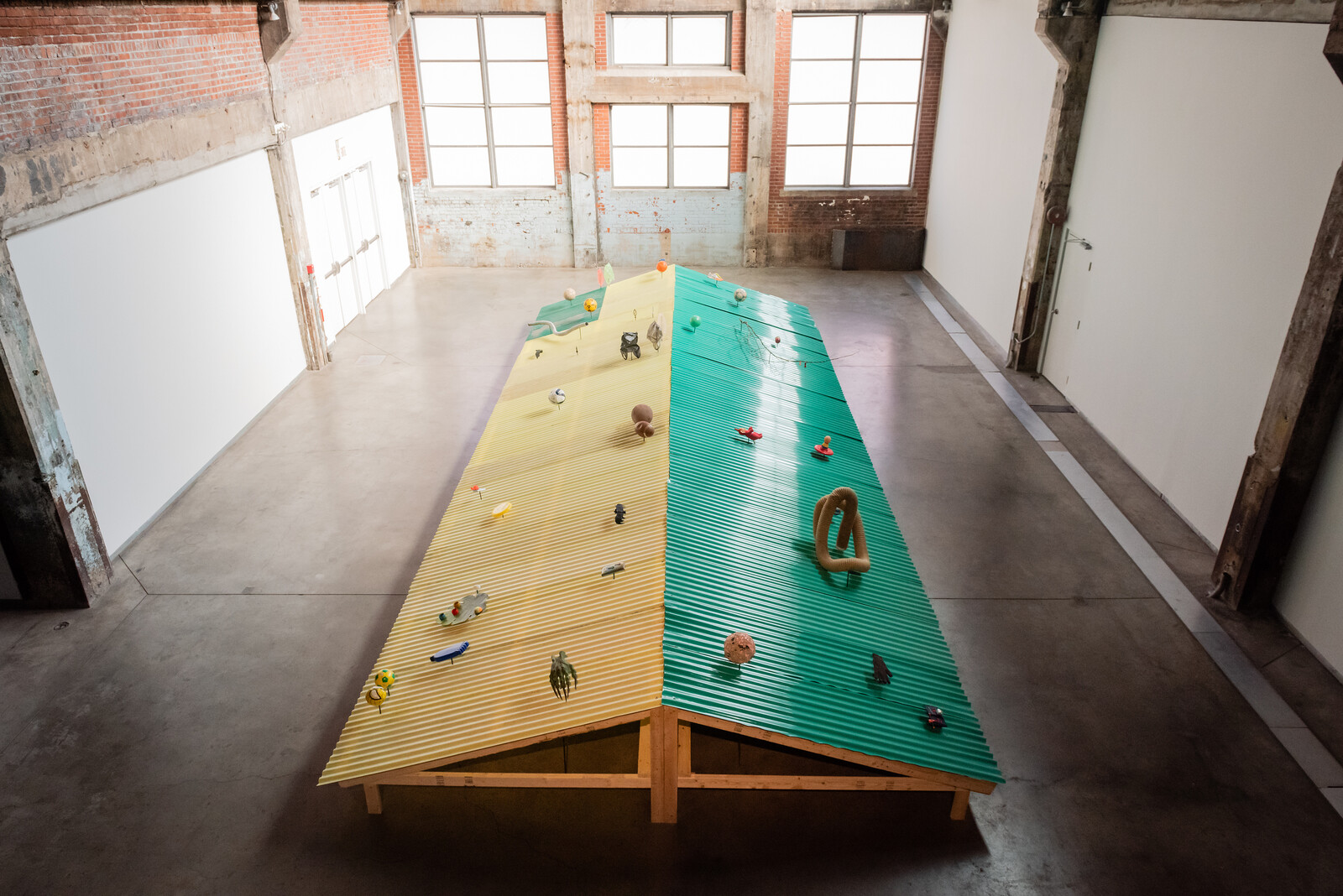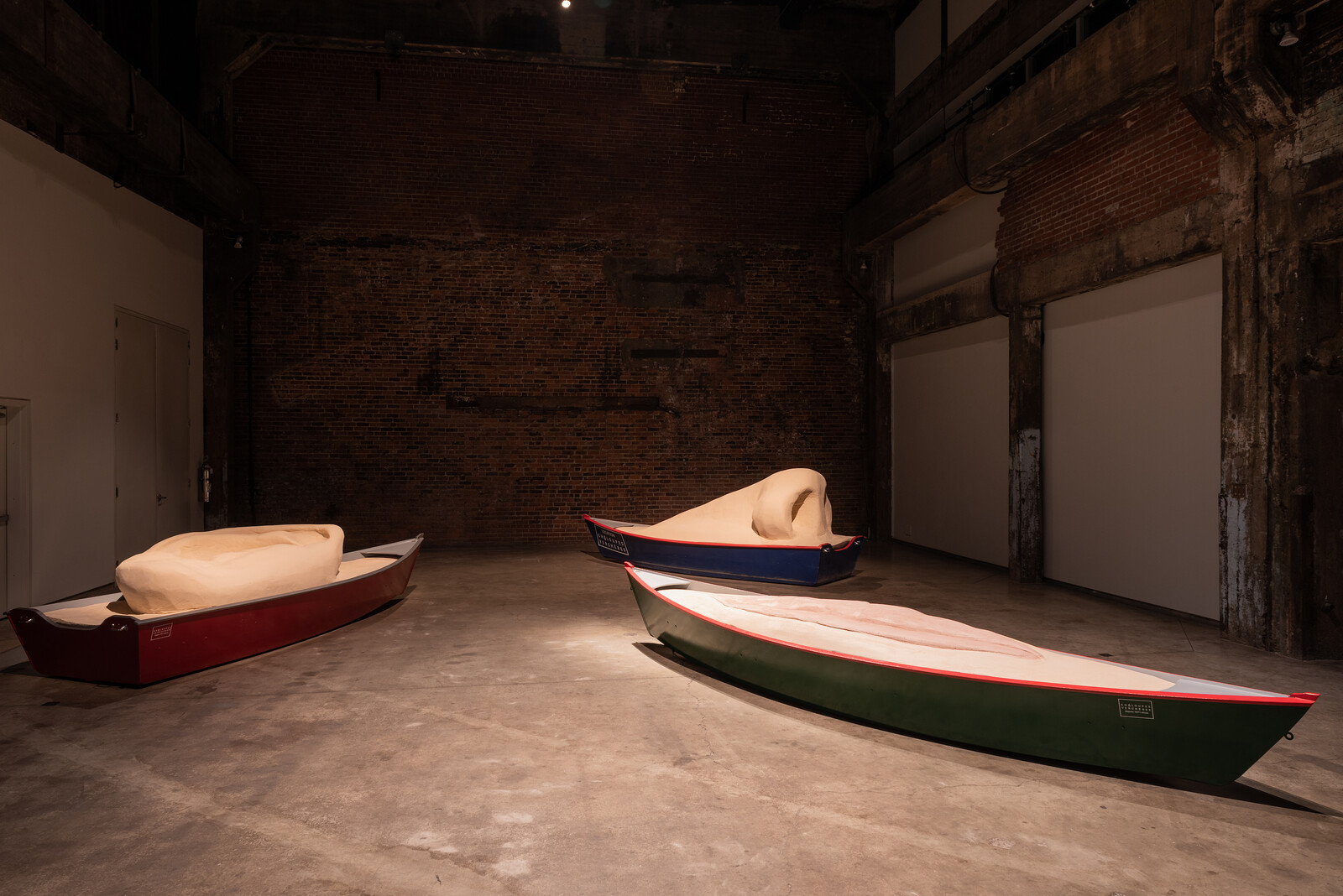A camera pans over a beach littered with driftwood. As the lens approaches a stack of branches arranged as if for a bonfire, a rocket-like screeching sound pierces the scene. An instant later, the wood goes up in flames. The image fades to a view of the artist Rebecca Belmore submerged in the nearby water. Fully dressed, she flails in the shallows with a metal bucket in her hand, gasping for air. Her body is thrown around by something other than the forces of the waves—an interior torment. Belmore exits onto the beach, carries the bucket toward the camera, and with an arduous groan throws its liquid contents against the lens. What we, the viewers, may expect to be clear water is blood-red, dripping down the lens as the artist stands and looks directly at us until the video ends. In Belmore’s installation Fountain (2005), the sequence was projected onto a wall of falling water inside the Musée d’art contemporain de Montréal (MACM).
In its ambiguity between birth or death, creation or apocalypse, Belmore’s Fountain—her contribution to the Canadian Pavilion at the 51st Venice Biennale in 2005—is as potent a metaphor today as it was almost 15 years ago. The Anishinaabe artist’s retrospective exhibition “Facing the Monumental” at the MACM is a sharp reckoning with the violence continuously inflicted on indigenous people in North America and many other places in the world. Confronting the continent’s settler-colonialist past and present, Belmore’s exhibition was but one of several shows dealing with pressing topics that I visited while I was in the Quebecois city in mid-October.
I had come to see this year’s MOMENTA Biennale de l’image, curated by María Wills Londoño in collaboration with Audrey Genois and Maude Johnson. Titled “The Life of Things,” the exhibition was held in 12 of the numerous cultural institutions in the city. While Belmore’s exhibition was not part of MOMENTA, Francis Alÿs’s 18-channel video installation Children’s Games (1999–ongoing) documenting games such as “hoop and stick” or “wolf and lamb” in different places around the world, was. Exhibited in the galleries next to Belmore’s point-blank work, the games lost their connotation of innocence, yet Alÿs’s insistence on the unifying nature of games felt out of sync. Nonetheless, Children’s Games formed part of a relevant biennial project that has departed from its original focus on photography to examine the role of images in an expanded field. This year’s edition responded not only to the archaic separation of artistic disciplines, but also to the status of objects at a time when many humans and nonhumans continue to be treated as things at best and are easily discarded if considered useless at worst. A June 2019 report by Canada’s national inquiry into missing and murdered indigenous women, girls, and 2SLGBTQQIA people points to the extent of the ongoing crisis and concludes it amounts to genocide. While the biennial’s title might evoke a dated exploration of object-oriented ontologies, it instead examines questions of labor, production, and consumption; rights to land and the writing of history; and the objectification of people, nature, and identities.
At another MOMENTA venue, the Galerie de l’UQAM, Patricia Domínguez’s installation The Isle of Dogs; a curse in reverse (2017–19) explores healing practices at the intersection of traditional knowledge and appropriation following colonial encounters and today’s new-age industries. Arranged to evoke pareidolia on a shrine of sorts comprised of different-sized pedestals, the work consists of video, painted ceramic vessels pointing to pre-Columbian cultures, button-up shirts associated with corporate business fashion, braided synthetic hair in blue and green hues, and leopard-print panties. Next to it, Victoria Sin’s four-channel video series “Narrative Reflections on Looking” (2016–17) addresses the objectification of women and gender identities from a non-binary position. Jeneen Frei Njootli’s video Being Skidoo (2017) expands her Vuntut Gwitchin First Nation’s tradition of making ceremonial garments for sled dogs to creating coats for snowmobiles, while her metallic sculptural diptych wind sucked in through bared teeth (2017) bears the greasy traces of the artist’s body and beadwork left during a performance that highlighted the ongoing atrocities committed against indigenous people. While Belmore’s tactic is explicitness, Njootli opts for opacity and withdrawal, in this case of the body. At the Galerie Leonard & Bina Ellen at Concordia University, Jonathas de Andrade’s film O Peixe [The Fish] (2016) and the installation Eu, mestiço [I, mestizo] (2017) offer a scathing critique of racism and classism in Brazil. The starting point for the latter work was Charles Wagley’s Race and Class in Rural Brazil, a book-length study commissioned by UNESCO and published in 1952 that attempted to undo racial stereotypes and prejudices but largely reaffirmed them. Pulling from an extensive list of words used in the survey, such as “cultured,” “escuro” [dark], and “lacking,” de Andrade created a site-specific wall installation consisting of text alongside black-and-white portraits taken in collaboration with people in Northeast Brazil, which were printed on honeycomb cardboard.
The sheer amount of neighboring artist-run spaces on the Avenue de Gaspé attests to Montréal’s lively independent scene. Outstanding here were Karen Paulina Biswell, Laura Huertas Millán, and Ana Mendieta’s video and photographic works at Dazibao, also part of MOMENTA, calling attention to violence against women and the importance of self-representation. At the Montreal Museum of Fine Arts, Omar Ba’s exhibition “Same Dream” brings together large-scale paintings and site-specific murals with vivid colors on black backgrounds in a condensed array of narratives that address political and ecological issues. On my way out of the city, I visited the Darling Foundry, where Marina Reyes Franco curated the exhibition “Resisting Paradise” with works by Deborah Anzinger, Leasho Johnson, and Joiri Minaya addressing compound modes of domination in which colonialism, capitalism, and reification act together. Minaya’s photographs Container #2 and #3 (2015–present) show her posing on a beach wearing a full-body suit with tropical pattern prints, which rather than exoticize provide a form of camouflage.
Also at the Darling Foundry was Javier González Pesce’s exhibition “Two Ways to Disappear Without Losing the Physical Form.” The installation The Island of the Un-adapted (2018/19) in the center of the space consists of a pitched rooftop scattered with toys and objects that González Pesce collected in Santiago, the artist’s hometown. Next to it was the sculptural and video installation Untitled (Human Face) (2017/19), consisting of a boat carrying sculptures of enlarged eyes, a mouth, and a nose, like a surrealist Noah’s Ark. As protests around the planet call attention to the deplorable state of the world, from forced migrations to climate change and systemic violence, in Montreal these struggles were interwoven but not flattened, pointing to the importance of thinking—and fighting—oppressions of different kinds together.
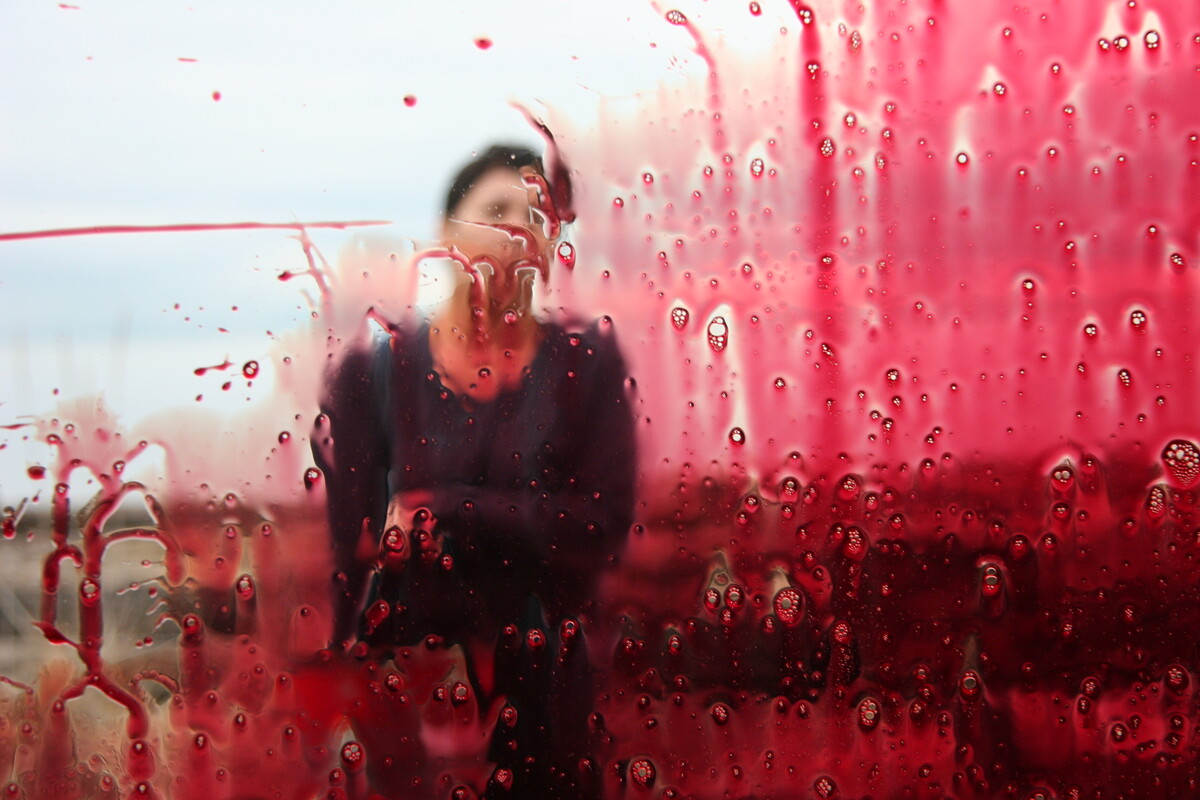
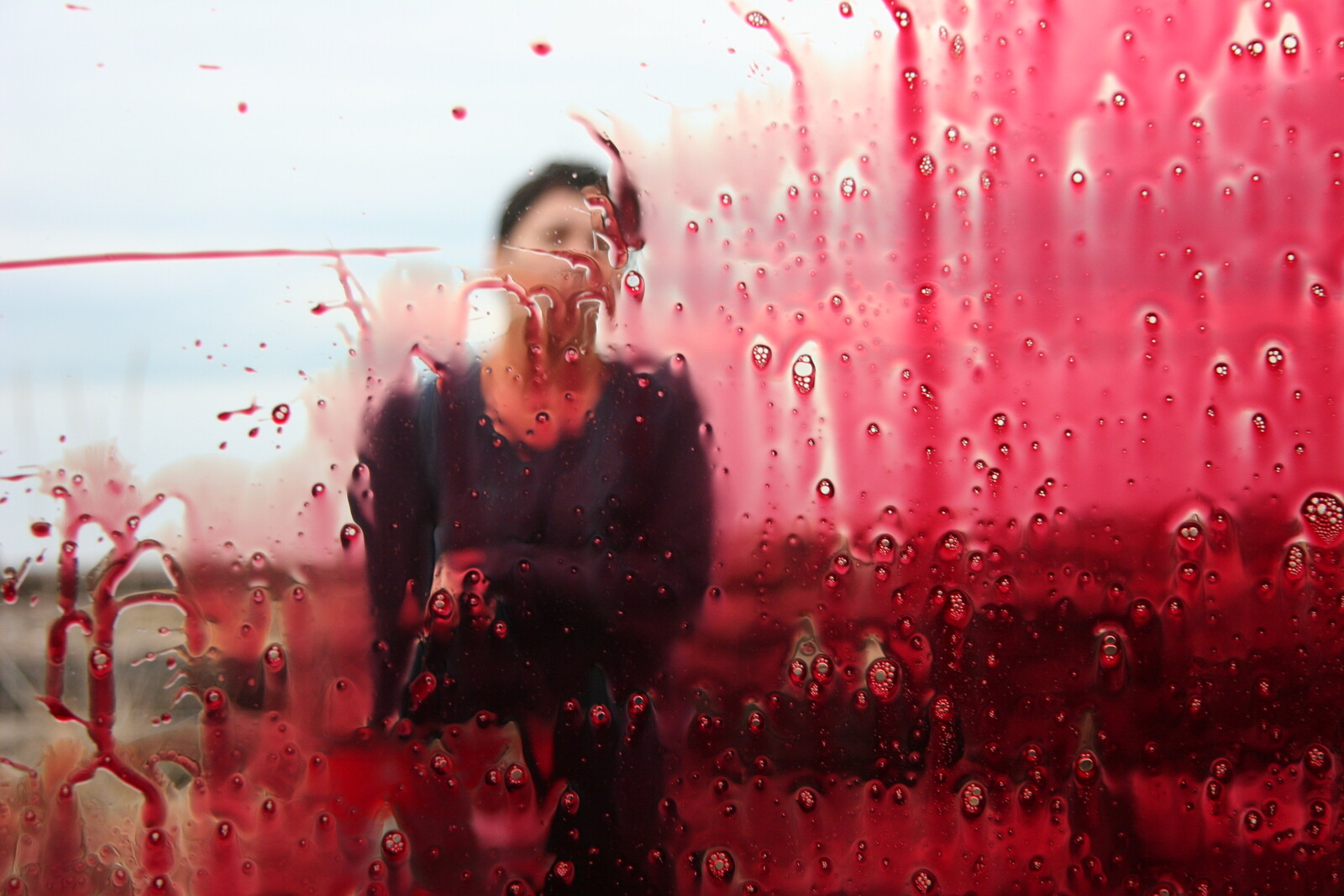
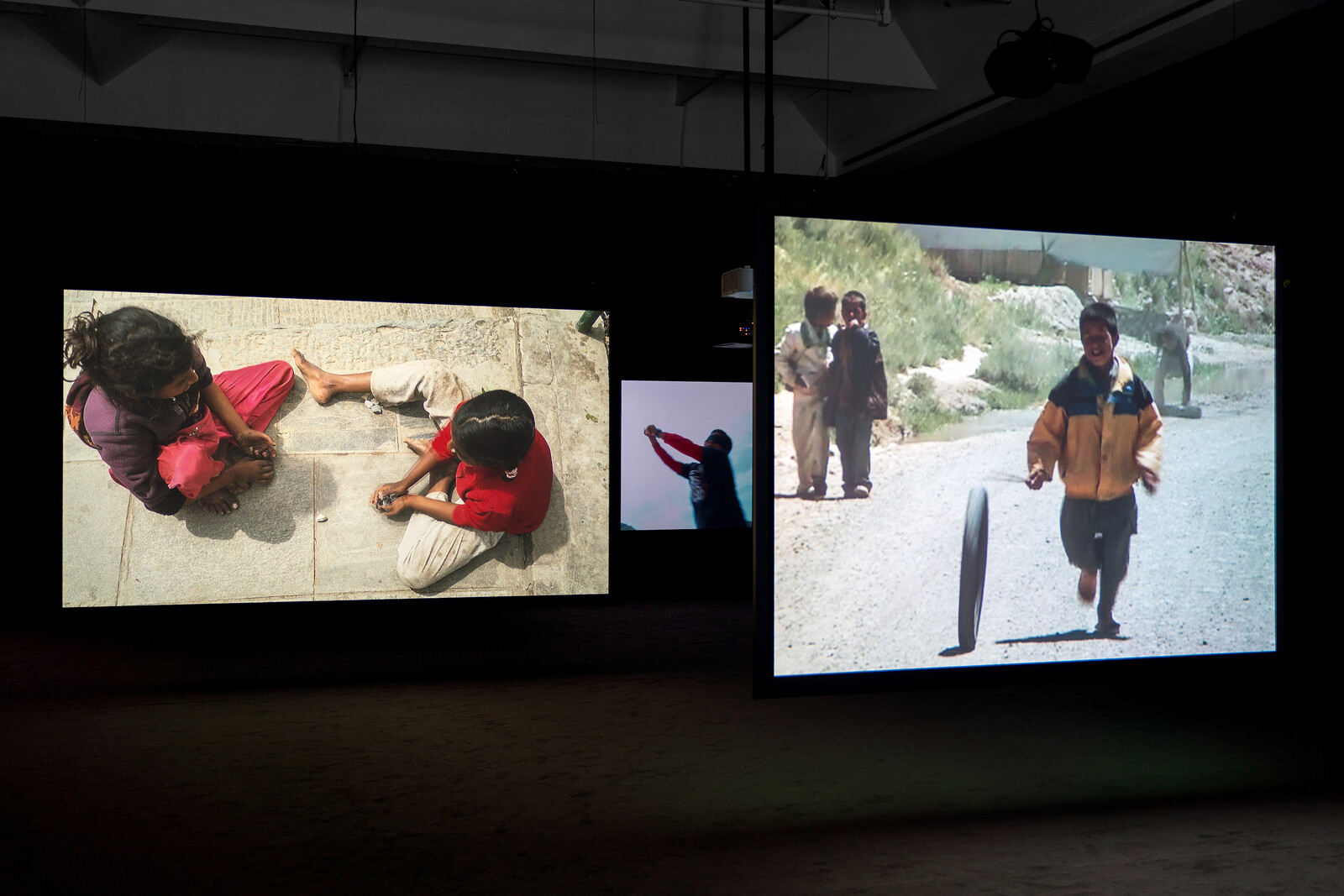
.jpg,1600)
